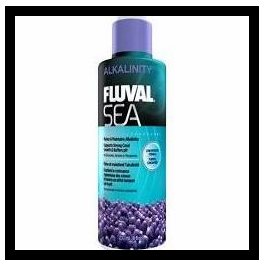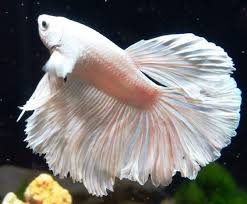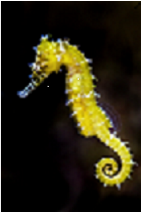Ammonia: NH3, Nh4+
Ammonia is the most toxic product in the water that is formed naturally from the biological processes in the aquarium. Ammonia exists in two forms in the water: NH3 (un-ionized) and NH4+ (ionized). The sum of both forms of ammonia is known as total ammonia. Both forms exist in water, but the proportion of each form is dependent on pH, temperature and other factors. The un-ionized form, NH3, is extremely toxic and the higher the pH (more alkaline), the higher the concentration of the NH3. Ammonia is naturally broken down into Nitrite and then Nitrate by beneficial bacteria.
pH:
pH is a measure of the acidity or alkalinity of water. pH ranges from 0 to 14 with 7 being neutral. Marine water acceptable ranges between 8.0 to 8.3. Freshwater pH can range 6.5 to 8.5 depending on the species of fish. Therefore, not all freshwater fish are compatible in the same aquarium based on this one factor. The general trend of water in an aquarium is the pH to lower, that is, it becomes more acidic. The biological processes that occur in the aquarium are the reason for this trend. Buffers are chemicals that occur naturally and stabilize fluctuations in pH. Buffers are widely available and can be added to the water to keep the water at the desired pH. Having the correct pH for the livestock in your aquarium is extremely important to their survival. The pH of water affects vital biological chemical processes. If the pH is not right vital biological chemical process cannot occur and life cannot be sustained.
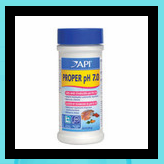
Phosphate
Phosphates, like nitrate, accumulate in aquarium water overtime. Phosphate contributes to the undesirable growth of algae and in high concentrations can negatively affect the health of invertebrates. Phosphates come from the digestion of food by aquarium animals, decay of excess food, and some activated carbon products. Overfeeding is the major reason for increasing concentration of Phosphates. Water changes are effective at removing phosphates as well as phosphate removing products. Phosphate can occur in both organic and inorganic forms and not all testing equipment measures both.
Salinity
Salinity is applicable to marine aquariums only. The specific gravity, or density, of water is the ratio of dissolved salt in the water compared to pure water. Pure water has a specific gravity of 1.00. Marine aquariums should have a specific gravity ratio in the range of 1.018 to1.025. A hydrometer is a device that measures specific gravity. Some of these devices are water temperature dependant, so it is important to factor in water temperature when taking a salinity reading.
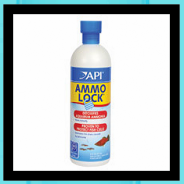
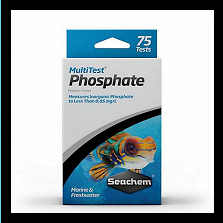
Alkalinity
Alkalinity of a solution refers to its capacity to buffer against fluctuations in pH. Alkalinity is provided in the aquarium by various negatively charged ions such as carbonates, bicarbonates, borates, and hydroxides. Some confusion surrounds alkalinity for two reasons: First, the term, Carbonate Hardness has been used as an interchangeable term for Alkalinity. Carbonate Hardness describes the amount of carbonate or bicarbonate dissolved in the water. True, carbonate and bicarbonate contribute to the water's alkalinity, but other compounds such as borates and hydroxides are involved too. Secondly, aquarists use two different units of measurement; milliequivalents per liter (meq/L) and degrees of carbonate (German = karbonat) hardness (dKH). Both measure alkalinity, but report the measurement in different units.Because aquariums are acid producing environments, we typically strive to keep the alkalinity double that of natural seawater. Natural seawater has an alkalinity of 2-3 meq/L, therefore ideal aquarium alkalinity parameter is between 4-6meq/L.
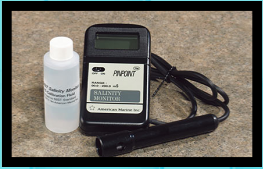
Nitrite: NO2-
As part of the Nitrogen Cycle, Ammonia is converted into Nitrite by the beneficial bacteria, Nitrosomonas. Nitrite is the intermediate step of the conversion of Ammonia into Nitrate. Once beneficial bacteria have been established, Nitrite detection is often impossible. Though, Nitrite is less toxic than Ammonia, it is still some what toxic to animals because it binds with red blood cells which prevent the uptake of dissolved oxygen. Nitrite buildup is mainly a concern during the set up or cycling of a new aquarium.
Nitrate: NO3-
Nitrate is the last nitrogen compound in the de-nitrification side of the nitrogen cycle. It is not as toxic as Nitrite and far less toxic than Ammonia to fish and invertebrates. Nitrate concentrations in the water increase as a result of the nitrogen cycle. Nitrate is essentially fertilizer, which algae feed on. An abundance of Nitrate enables unattractive algae blooms. Anaerobic bacteria convert Nitrate back into Ammonia on the nitrifying side of the nitrogen cycle, but these bacteria are not present in aquariums because of the presence of oxygen in the aquarium environment. Therefore, the best way to control Nitrate is with periodic water changes.At elevated levels, Nitrate is stressful to all aquatic animals. Some are more tolerant to elevated Nitrate levels than others. Most invertebrates, especially corals, cannot survive in a display with elevated Nitrates. Higher Nitrate concentrations also stress new animals added to a display. A fish taken from a tank with Nitrates at 40 ppm will not typically acclimate to a display with 150 ppm. Again, water changes are the best means for reducing this concentration.



02
Fish and other invertebrates need oxygen as part of the respiration process. Interestingly enough so do plants in the dark or nighttime phase of photosynthesis. Water filtration and aeration devices incorporate plenty of dissolved oxygen into the aquarium water. Therefore it is very unlikely that low oxygen levels might occur.
Calcium
Generally, the concentration of Calcium is more important to the saltwater aquarium hobbyist than the freshwater aquarium hobbyist. Calcium in marine aquariums is consumed by calcifying plants and animals that include coralline algae and corals. The ideal calcium level in the home marine aquarium should mimic that of natural seawater, 400 ppm. Without an adequate concentration of calcium, many corals cannot grow. Calcium concentration, which can be monitored with test kits, does play a role in stabilizing the aquarium pH.










